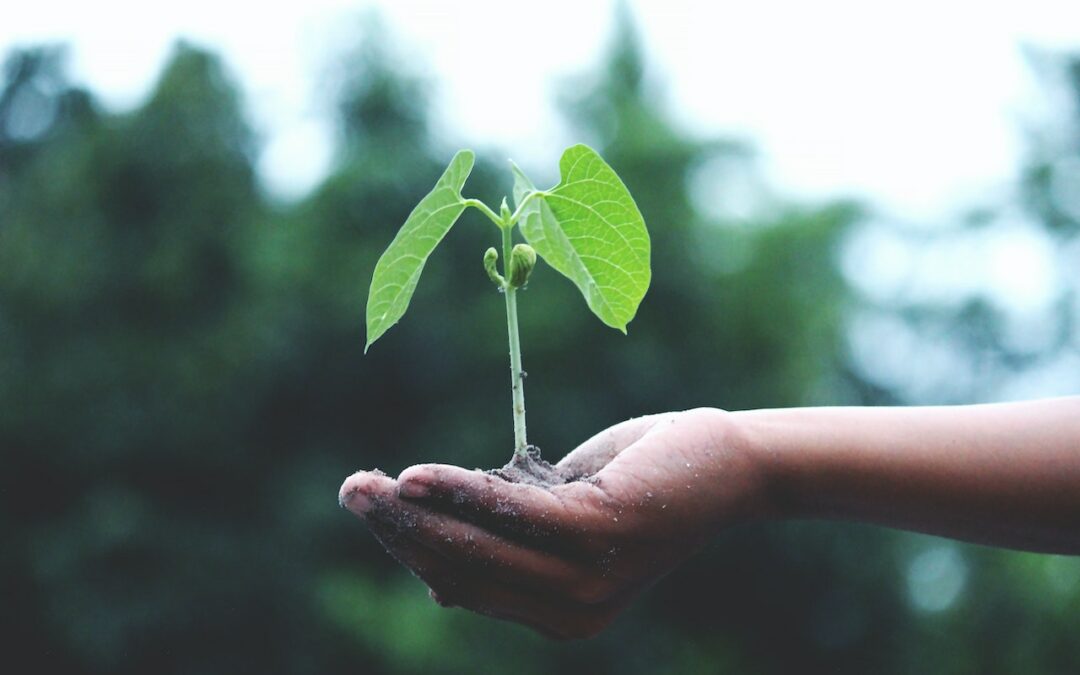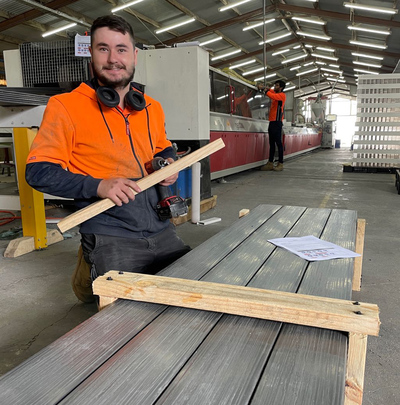


Can I see your (product) passport please!
Digital Product Passports that allow consumers to scan a product’s label to read up on its sustainability credentials and understand how to repair and recycle it are one step closer. In time, these passports will likely apply to everyday products like clothing and phones as the world moves to a more circular economy.
Upping the circular economy game in the EU and locally
Agreed in principle by the European Parliament in December 2023, the new Ecodesign for Sustainable Products Regulation (ESPR) will require almost any product in the EU market to provide proof that it’s sustainable, durable and recyclable. This means that local businesses need to up their circular economy game to continue to trade with the European Union.
thinkstep-anz circular economy expert Jim Goddin said, “Now is the time for businesses to get ready.” Goddin draws on experience gained from many years of working with the Ellen MacArthur Foundation, a leading global circular economy organisation. The Chartered Engineer and Chartered Environmentalist moved from the UK to New Zealand in late 2023 to fulfil a lifelong dream and to support businesses in New Zealand and Australia. “There is a lot of interest in the circular economy in both countries, and it’s exciting to be here,” he said.
“The circular economy is a concept that changes how we produce and consume goods,” Goddin explained. “It moves us away from the current ‘linear’ model of making, using and throwing away.” It dramatically reduces waste, makes the most of resources, extends the life of products and recovers more materials.
Not the same as recycling
“The circular economy isn’t the same as recycling,” Goddin said. “While recycling is an important solution and converts waste into reusable material, the recycling process can sometimes devalue that material.” For example, we can’t make a milk bottle from purely recycled materials. There is always virgin material needed.
The circular economy aims to prevent waste and pollution from being created in the first place by designing products so that they, and the materials that make them up, can be used for as long as possible at their highest value. This means thinking beyond recycling and looking at opportunities for consumers to repair and reuse products and for manufacturers to remanufacture them.
Information for a more circular economy
However, one of the greatest challenges to making progress with a circular economy is the lack of data and transparency across supply chains. “We need to know what materials products are made of to keep them in service for longer, to work out how to reuse or repair them, to know if they can be safely composted, or to separate them effectively to maximise the value of recycled materials,” Goddin said. This is where Digital Product Passports come into play.
What the ESPR means for Australian businesses
Businesses trading with the EU — or supplying those who do — will need a Digital Product Passport (DPP).
The DPP tracks where a product has been over its entire lifecycle. It’s a digital record that contains information about its ‘journey’ and what it is made from.
Companies can apply this information to use resources more efficiently, shore up their supply chains, cut down on waste, extend the lifespan of a product and improve recycling initiatives. Consumers can make more informed decisions.
Businesses may need to provide data on several aspects:
How durable the product is. Can it be reused, upgraded or repaired?
Whether it contains substances that cannot be circulated (passed on). Examples include coatings that prevent composting or chemicals that prevent specific uses (eg, food applications).
How energy- and resource-efficient it is.
How much recycled content it contains.
Whether it can be remanufactured or recycled.
What its carbon footprint is.
Where to start:
See this as an opportunity
This isn’t just another hurdle but a chance for you to tell your product’s story and for your customers to understand its value. What story do you want them to hear, and how do you back that up with evidence to give them confidence to believe it?
Prepare in advance for the data you’ll need
A lot of your data will need to be verified by qualified third parties against established standards. This will take time.
Do your homework
Investigate how you will structure, store and share this information. Many digital platforms are emerging to help you do this. The platforms will eventually all need to work together.
Consider the lifetime of your data
How will you maintain the data? What additional value could you get from it?
Make yourself stand out
Think about your competition. How will the sustainability and circularity of your products stand out from the crowd?
When will I need the passport?
Batteries and vehicles, textiles, electronics and ICT, furniture, plastics, construction materials and chemicals will be the first industries that will need to get their passports sorted. While the final timeline is still being worked on, 2026/7 looks likely for the first industries to adopt DPPs. Others are expected to follow suit by 2030.
Growing up on the remote Orkney Islands off the coast of Scotland, Jim Goddin, Head of Circular Economy, thinkstep-anz, was interested in sustainability from an early age. From watching Europe’s largest experimental wind turbine from the windows of his small school to admiring a stream-powered electricity generator at his parents’ property, he was also fascinated by engineering. As a leading expert in circular economy, he has collaborated with prestigious organisations such as the Ellen MacArthur Foundation. He has worked extensively on developing eco-design tools like calculators that measure circularity and assess business risks resulting from critical materials and hazardous substances legislation.
Image credit: iStock.com/BlackSalmon

Transforming pill packaging into fencing
The Vinyl Council of Australia (VCA) is collaborating with several Australian industry partners to recycle waste PVC pharmaceutical blister packaging.
VCA member Think Fencing, based in Portarlington, Victoria, has partnered with Pharmacycle to recycle blister packaging collected via Pharmacycle’s drop-off points, located in pharmacies, hospitals and local council sites across Australia.
Chemist Warehouse has recently joined early adopters Bloom The Chemist and National Pharmacies as a drop-off location, introducing the program in 100 of its stores across Victoria.
“We are seeing significant interest from consumers, pharmacies and the healthcare sector in being able to recycle this type of material, in part driven by the focus on blister packaging in the ABC’s War on Waste program,” said Pharmacycle’s Business Development Manager Michael Klapsogiannis.
To date, Pharmacycle has recycled over 32 tonnes of blister packaging, adding up to more than 21 million individual blister packs.
From blister packs to fencing
Once the packaging has been collected, Pharmacycle weighs and sorts it, removing any contaminants, such as unused pills or other medical packaging, to ensure that the material streams are as clean as possible. The material then undergoes a size reduction and granulation process, before the PVC (and a small volume of other plastics) are separated from the aluminium through an electrostatic separation process — the same machinery used by PanelCycle to separate aluminium composite panel (ACP) cladding. The aluminium is then sent to Weston Aluminium in NSW for reuse, while the PVC component is sent in powdered form to Think Fencing.
Using an AI-driven prototype device developed by the CSIRO, Think Fencing analyses the material to understand its key properties, because each batch varies slightly depending on the level and type of contamination. The results of this analysis are used to optimise the mix of the material with other recycled content streams, including credit card surplus material from Placard, window profile offcuts from VCA member aluplast and necessary additives, to ensure the blend meets Think Fencing’s required specifications.
Think Fencing’s fencing and decking made from the PVC recyclate.
“With such a variety of material streams, it’s really important that we can understand the properties of the recyclate we’re using,” said Think Fencing Chief Technical Officer Jack Fitzgerald.
“The CSIRO analyser has been a game changer in the way we understand and incorporate recycled material.”
Since the introduction of the analyser, Think Fencing’s recycled content usage has increased from 15 to 85% in the company’s primary PVC fencing ranges, and makes up a similar proportion in the soon-to-be released OneDeck decking range. Virgin material is used to ‘cap’ the products to ensure a consistent visual finish.
Given the cost of the recycled feedstock is almost 70% cheaper than the virgin material Think Fencing used to source, the company is planning to use a variety of other recycled PVC materials, including PVC pipe scrap, playing cards and vinyl flooring.
“This collaboration highlights the recycling potential of diverse product types when they’re kept out of mixed waste streams — given that existing recycling infrastructure is currently ill equipped to manage these materials effectively,” said Vinyl Council of Australia Chief Executive Jim Coulston.
Future expansion
Given the project’s success, Think Fencing plans to develop a new recycling plant and warehousing facility in Victoria along with a warehousing facility in Brisbane to allow more PVC products to be collected and recycled. Funding and industry partners are being sought to support this growth.
The CSIRO analyser is currently undergoing a patent process, with a formal demonstration of the technology to be presented by CSIRO’s Melissa Skidmore at the PVC AUS 2024 conference in June.
Pharmacycle plans to increase its number of collection points from 400 to 1000 by mid-2024, and is confident that with industry support it will be able to continue growing its program.
To learn more about Think Fencing, visit onedeck.com.au.
Top image caption: Pharmacycle sorting line.

With Austria and UNDP support, Moldova rehabilitates its hydro-infrastructure, to mitigate vulnerability to climate hazards
This post was originally published on UNDPWith Austria and UNDP support, Moldova rehabilitates its hydro-infrastructure, to mitigate vulnerability to climate hazards admin Sun, 04/14/2024 – 11:15 The Republic of Moldova will strengthen its resilience to the...
Concerning level of 'forever chemicals' in global source water
A recent UNSW-led international study has assessed the levels of per- and poly-fluoroalkyl substances (PFAS) in surface and ground water around the globe.
PFAS are a group of over 14,000 human-made chemicals that have been popular since the 1950s thanks to their diverse abilities in resisting heat, water, grease and stains. They have commonly been found in household products like non-stick frying pans, clothing, cosmetics, insecticides and food packaging, as well as specialty industry products like firefighting foam.
Despite their utility, the chemicals have a more sinister reputation. Dubbed ‘forever chemicals’, they are notorious for not degrading any further once they’re in the environment — or in people’s bodies.
Concerningly, the study found that much of our global source water exceeds PFAS safe drinking limits.
“We already knew that PFAS is pervasive in the environment, but I was surprised to find out the large fraction of source waters that are above drinking water advisory recommendations,” said UNSW Engineering Professor Denis O’Carroll, senior author of the study.
“We’re talking above 5%, and it goes over 50% in some cases.”
The research team pulled together PFAS measurements from sources around the world, including government reports, databases and peer-reviewed literature. Altogether, they collated more than 45,000 data points, which span roughly 20 years. Their study is reportedly the first to quantify the environmental burden of PFAS on a global scale.
High concentrations of PFAS were found in Australia, with many locations above recommended drinking water levels. This tended to be in areas where firefighting foams had been used in the past, like military institutions and fire training facilities.
O’Carroll stressed that these PFAS traces are found in source water, such as dams, and not drinking water itself, which goes through treatment plants, some of which are designed to reduce the amount of chemicals such as PFAS in our water before it comes out of the tap. However, some water providers — eg, Sydney Water — don’t routinely measure the broad range of PFAS potentially in our drinking water, O’Carroll said.
“Drinking water is largely safe, and I don’t hesitate drinking it,” he said. “I also don’t suggest that bottled water is better, because it doesn’t mean that they’ve done anything differently than what comes out of the tap.
“But I certainly think that monitoring PFAS levels and making the data easily available is worthwhile.”
Most people in Australia are likely to have low levels of PFAS in their bodies. The potential health risks are poorly understood and haven’t been agreed on universally. While an Australian Government expert health panel found there is “limited to no evidence” that PFAS poses clinically significant harm to human health, peak bodies in the US and Europe suggest that PFAS is linked to adverse health outcomes, and last year the WHO declared PFOA, a type of PFAS, a category one human carcinogen.
There is also a lack of consensus as to the acceptable level of PFAS in drinking water, with Australia allowing significantly higher limits than the US, and Canada being much stricter than both countries.
“There’s debate about what level PFAS should be regulated to,” O’Carroll said. “Australia has much higher limits than the US, but the question is why.
“Both health bodies would have different reasoning for that, and there’s not a really strong consensus here.”
The study suggests that actual PFAS pollution in global water resources could be higher than suspected. This is partly because only a limited number of the 14,000 PFAS in existence are monitored and regulated, and also because the levels of PFAS in consumer products are higher than expected.
“There’s a real unknown amount of PFAS that we’re not measuring in the environment,” O’Carroll said. “Commercial products like garments and food packaging have a lot more PFAS in them than we realise.
“This means we’re likely underestimating the environmental burden posed by PFAS.”
The team is now attempting to quantify the level of PFAS from commercial products in the environment. It is also working to develop technologies that can degrade PFAS in drinking water systems, and looking at developing predictive models that determine where PFAS will go in the environment.
“Part of this is figuring out how PFAS will associate with different parts of the environment and our bodies — proteins, for example,” O’Carroll said.
These new studies will be in progress over the next two years, with the aim of being completed by 2026. The findings of the current study have been published in Nature Geoscience.
Image credit: iStock.com/LKR Photography
